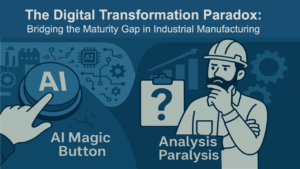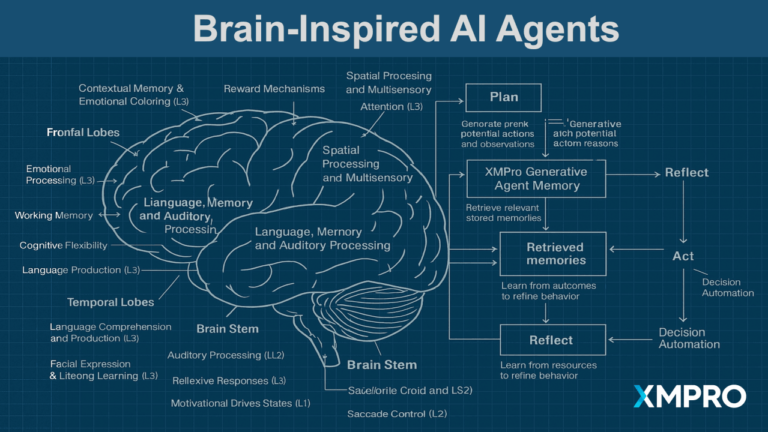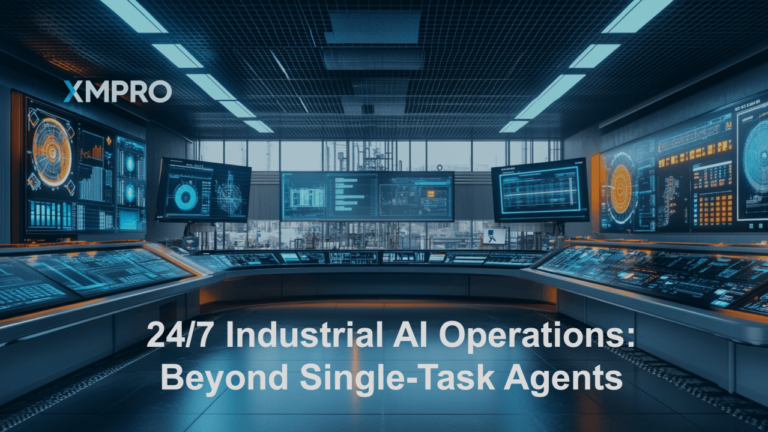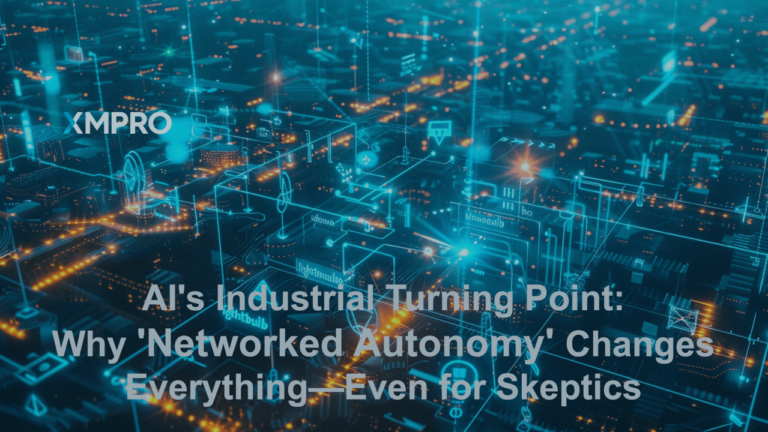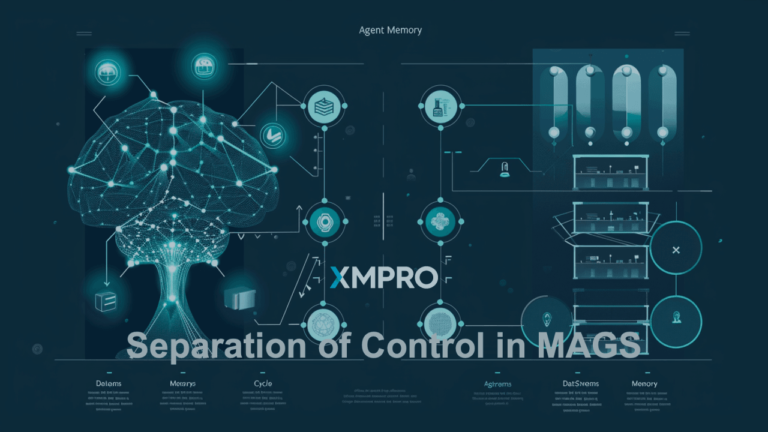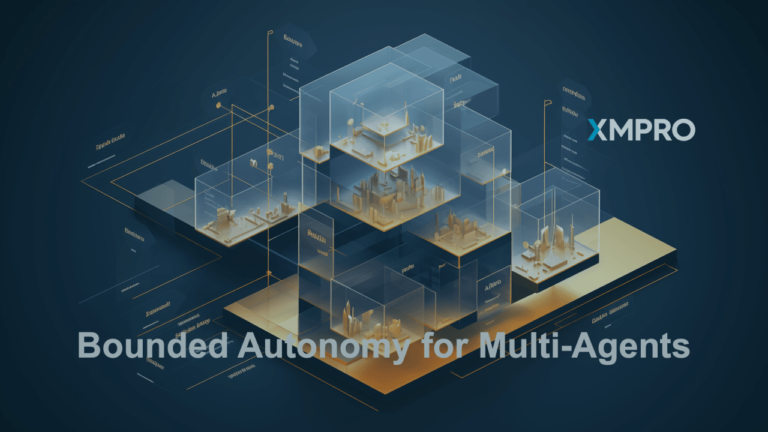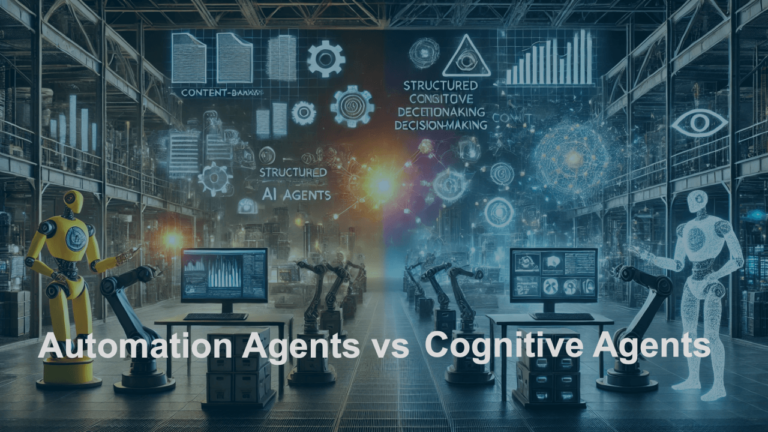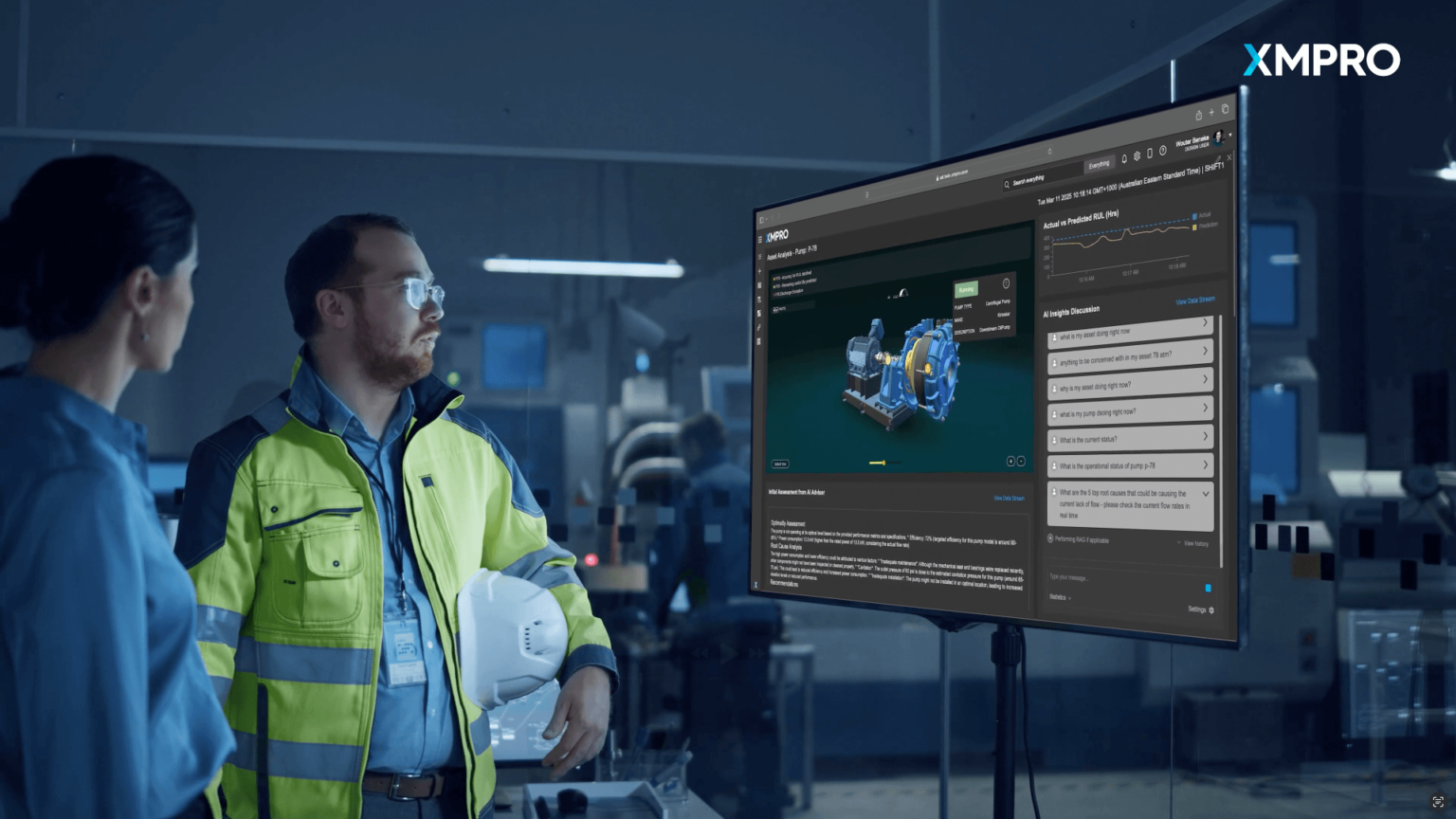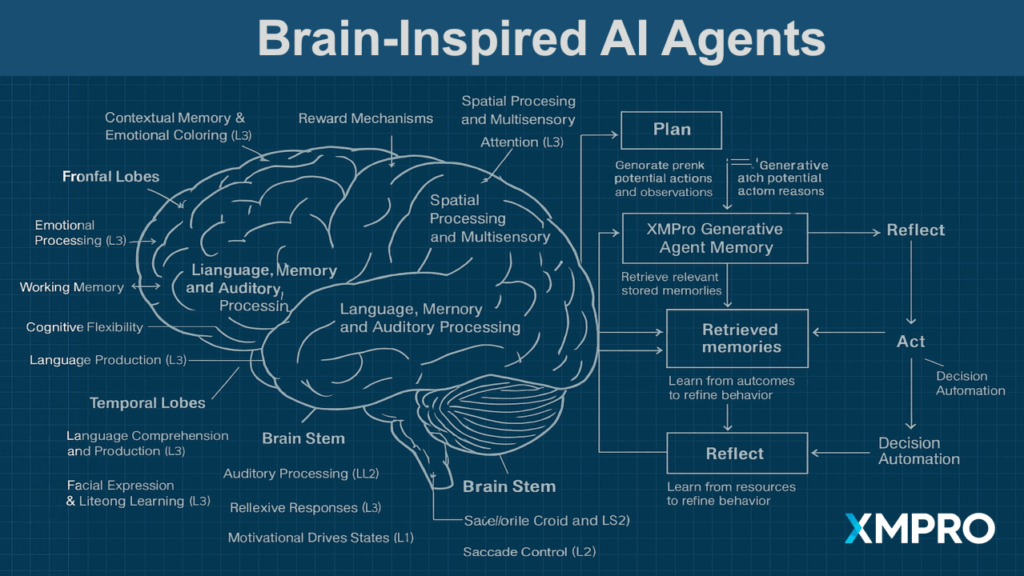

Pieter Van Schalkwyk
CEO at XMPRO
Industrial AI has reached a critical inflection point. Companies are spending millions on POCs and simple agent workflows—like chatbots that search product manuals—with limited adoption at scale. Engineers already suffering from cognitive overload don’t need more information; they need systems that actually perform tasks to completion.
What’s missing is a fundamental rethinking of how AI agents should be designed. The real value comes from teams of virtual workers that can execute entire processes under human supervision. But creating these systems requires more than adding LLMs to existing workflows—it demands an architecture inspired by how intelligence actually works.
A groundbreaking survey paper titled “Brain-Inspired Modular AI Agents” provides exactly this blueprint. This landmark 264-page technical survey on the next evolution of intelligent agents just landed, authored by researchers from 20 top institutions including Stanford, Yale, CIFAR, DeepMind, Microsoft Research, MetaGPT and more.
Its findings stopped me in my tracks because it maps out precisely what we’ve been building at XMPro for the past year—AI systems modeled after the architecture of the human brain.
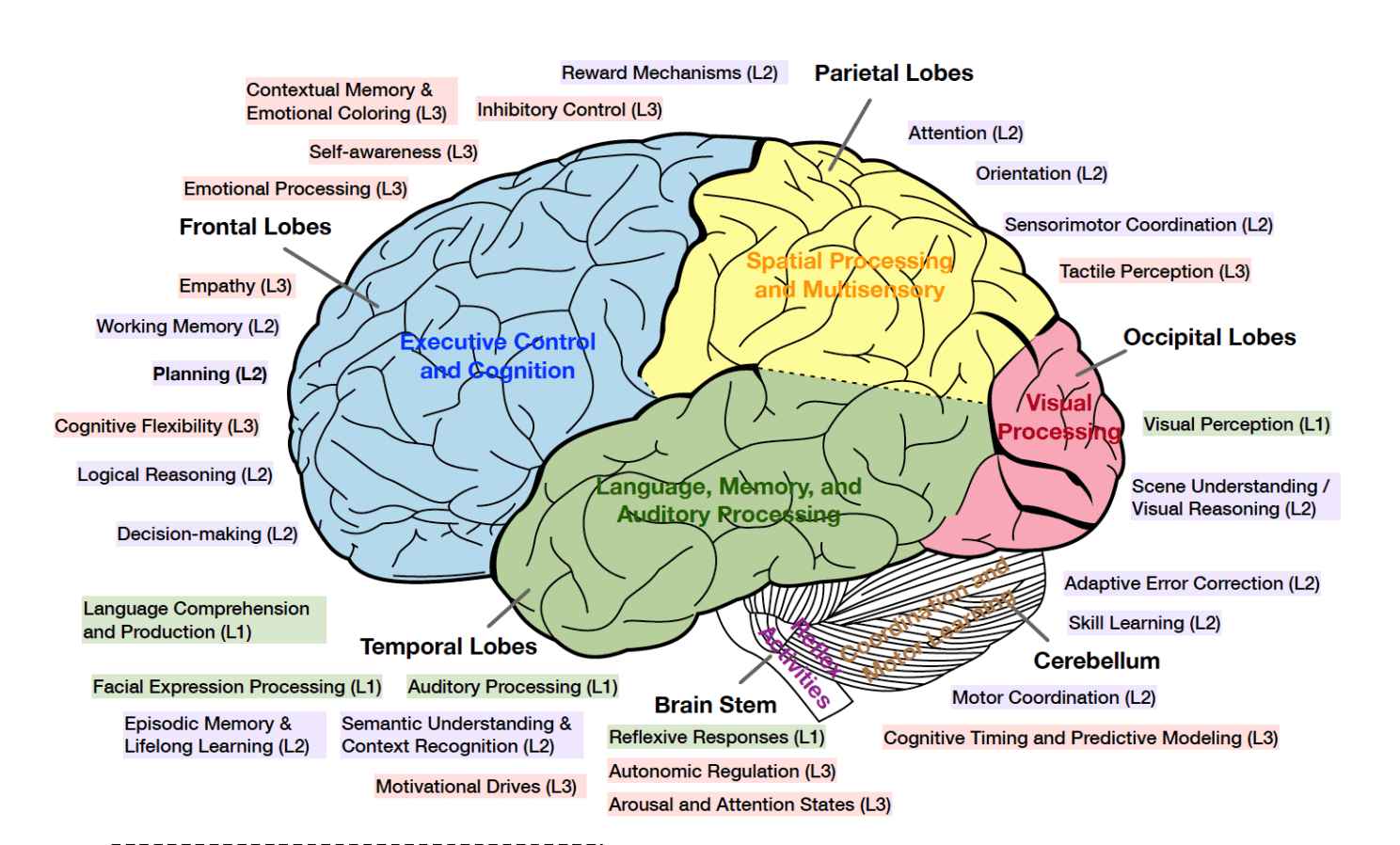
Image from Brain-Inspired AI Agents:
The parallels between this independent research and our Multi-Agent Generative Systems (MAGS) aren’t just interesting—they validate our entire approach to industrial AI.
While competitors focus on procedurally coded workflow automation with LLMs tacked on, we’ve built a cognitive architecture that mirrors how human experts actually think and make decisions.
The Research Framework That’s Changing AI Agent Design
This extensive survey synthesizes research across neuroscience, cognitive science, and AI. It presents a comprehensive framework for intelligent agents that draws explicit parallels between human brain regions and AI components. The paper’s four key areas align remarkably with XMPro’s development approach:
- Modular Agent Design – Combining specialized cognitive modules like memory systems, world models, and reasoning pathways into a unified framework
- Self-Enhancement Mechanisms – Building agents that improve themselves through continuous learning and adaptation
- Collaborative Multi-Agent Systems – Creating teams of specialized agents that work together to solve complex problems
- Safety and Beneficial Alignment – Ensuring systems operate safely and align with human values and business goals
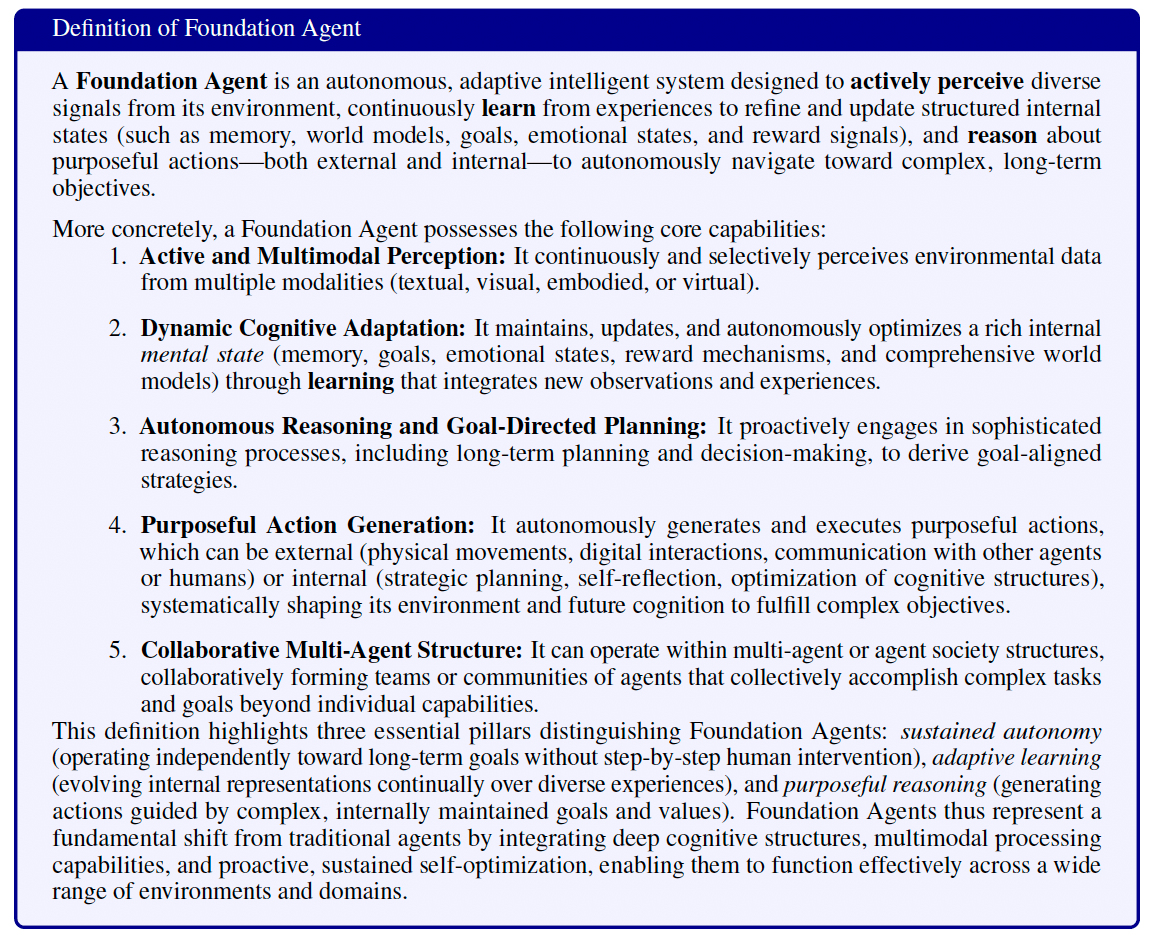
Image from Brain-Inspired AI Agents:
This approach moves beyond treating Large Language Models (LLMs) as standalone systems. Instead, it positions them within a broader architecture that reflects how biological intelligence actually works.
Real Agents vs. “Agent-Washing”: Clarifying the Distinction
The research provides much-needed clarity on what constitutes a true “Foundation Agent” versus what I call “agent-washing.” This distinction matters critically in industrial environments where AI decisions affect physical equipment, production schedules, and sometimes human safety.
Many vendors now rebrand simple LLM-based workflows or basic coded automation as “intelligent agents.” The paper makes clear: true intelligent agents require specific cognitive modules working together in a coherent architecture. They need memory systems that preserve experience, world models that understand causality, and reasoning capabilities that adapt to new situations.
This research provides strong validation for what I discussed in “The Carroll Industrial AI Agent Framework” based on inspiration from a Michael Carroll article on “Agent-Washing”. Drawing on Mike’s mention of Arthur Kordon’s foundational axioms, that framework established that genuine agency requires three core capabilities:
- Learning from experience and continuously improving over time
- Making autonomous decisions within defined boundaries based on principled reasoning
- Adapting strategies based on changing conditions through sophisticated observation and reflection
These capabilities don’t emerge from simply adding an LLM interface to coded workflows. They require the kind of brain-inspired architecture this new research describes in detail—precisely what we’ve built with XMPro MAGS.
How XMPro’s Approach Aligns with Brain-Inspired Architecture
The paper outlines an architecture built around specialized, interconnected modules that create capabilities greater than their individual parts. This mirrors XMPro’s approach to Multi-Agent Generative Systems (MAGS).
As the paper notes:
“Unlike current LLM agents, the human brain effectively balances perception, memory, reasoning, and action through specialized yet interconnected regions, enabling adaptive responses to complex stimuli.”

XMPro Multi Agent Generative Systems:
Our MAGS architecture separates cognitive, perceptual, and operational components while creating clear pathways for their integration. This reflects the functional specialization we see in biological systems.
Memory: The Foundation of Intelligence
One striking validation comes in how the paper emphasizes memory systems. The research describes a “Memory Lifecycle” that includes acquisition, encoding, derivation, retrieval, and utilization.
We’ve implemented these exact principles in our AgentMemory class through:
- Different memory types (observations, reflections, plans, decisions, actions)
- Importance scoring to highlight significant memories
- Temporal decay mechanisms that mimic human memory patterns
- Vector-based representations for similarity-based retrieval
Finding that independent research has arrived at these same requirements confirms we’re building on sound cognitive principles.
The Cognitive Cycle: How Agents Think and Act
The paper outlines an “agent loop” of perception, mental state updates, and action that mirrors our ORPA (Observe, Reflect, Plan, Act) cycle. This isn’t coincidence—it reflects how effective intelligent systems must operate.
Our ORPA implementation enables agents to:
- Gather information from their environment
- Reflect on this information using past experiences
- Create plans based on objectives and constraints
- Execute these plans and learn from outcomes
This creates agents that don’t just react but build meaning through continuous observation and reflection. This capability is essential for systems operating in complex industrial environments.
Multi-Agent Systems: Collective Intelligence
The paper explores how groups of agents can achieve more than isolated ones. This aligns with XMPro’s approach to agent teams with standardized communication protocols and shared objectives.
Shared Memory and Decision Spaces
What truly distinguishes our approach is implementing shared memory spaces and shared decision spaces. These architectural elements mirror how the human brain works, where memories distribute across regions yet remain accessible throughout the system.
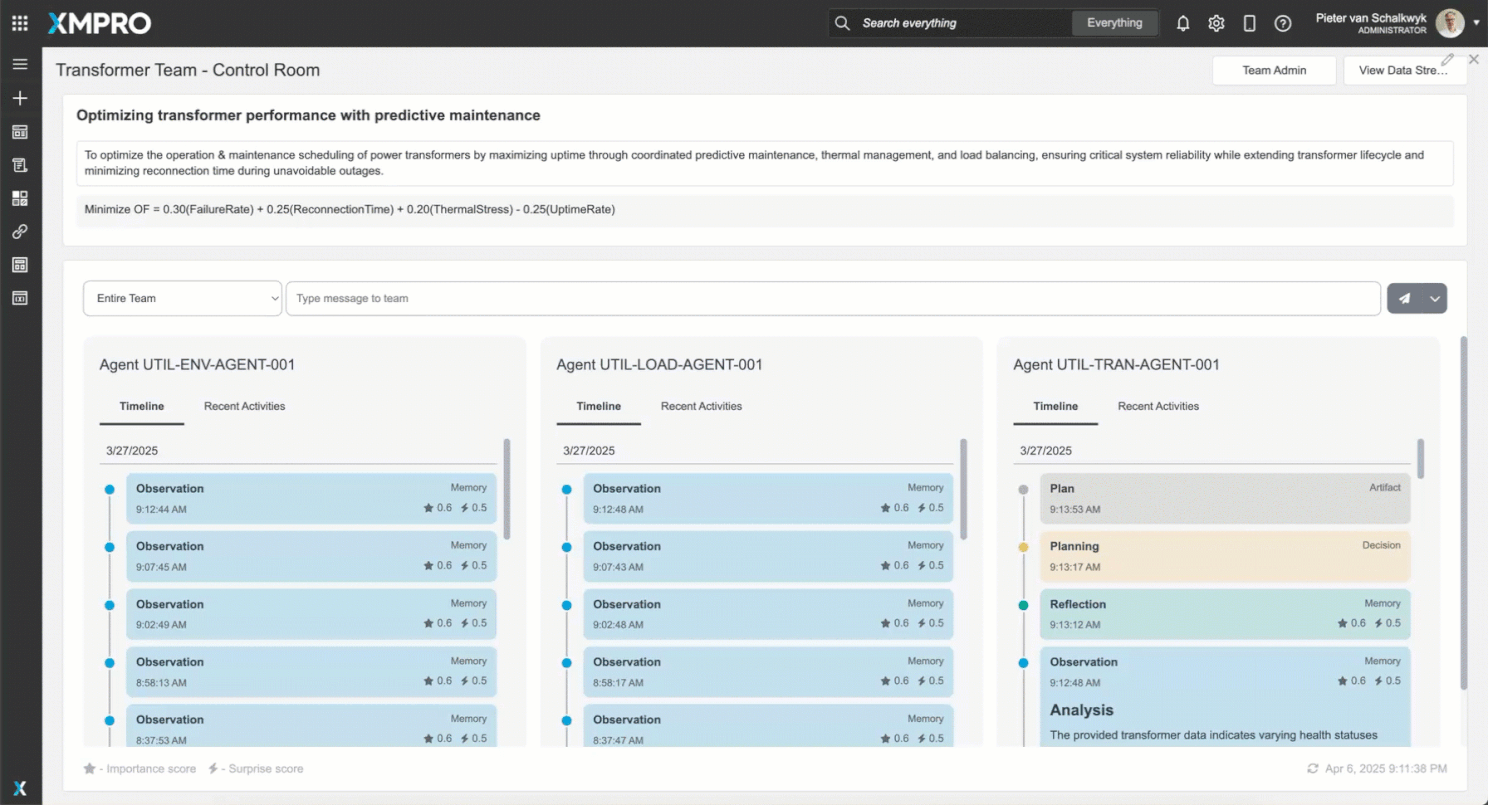
A Shared Memory and Decision Space for an XMPro MAGS Transformer Management Team
In XMPro MAGS, we implement these shared spaces through our graph and vector database architecture. This creates what one industry analyst described as:
“A system that can scale many agent instances, each with its own specialties, while operating on a set of shared memory space in terms of managing their representation of the environment as well as their decision space.”
This shared cognitive infrastructure helps our agents:
- Access and build upon observations from other agents
- Coordinate decisions based on common understanding
- Capture and preserve human expertise from historical decisions
- Develop specializations based on collective needs
This capability becomes essential for industrial applications where experienced operators retire and take decades of knowledge with them.
Safety and Governance: Essential Foundations
The paper dedicates significant attention to building safe and beneficial AI agents. This has been central to our approach since day one.
Our implementation of “Rules of Engagement” through deontic principles creates bounded autonomy. This allows agents to operate independently while ensuring their actions remain within defined ethical and operational parameters.
The key principle we’ve implemented is “separation of control“:
“The agent can think, plan, and request—but the DataStream determines what actually happens.”
This approach is essential for deploying AI in high-consequence industrial environments. Having independent research validate this approach confirms its fundamental importance.
Formal Assessment of XMPro MAGS
Using evaluation criteria derived from the paper, we conducted an initial assessment of XMPro MAGS against Foundation Agent requirements. The results show strong alignment across all four core dimensions.
Strong Cognitive Architecture Implementation
XMPro MAGS demonstrates strong implementation in several critical areas:
- Memory Systems (★★★★): Our AgentMemory class implements sophisticated memory with importance scoring, surprise detection, and vector-based retrieval.
- Reasoning & Planning (★★★★): Through structured prompting and PDDL implementation, MAGS demonstrates advanced reasoning with formal planning representations.
- Action Systems (★★★★): Well-structured action execution through AgentAction and tool usage creates a robust foundation for operations.
We also identified areas for enhancement that align with our development roadmap:
- World Modeling (★★★): While MAGS maintains basic world models, it could benefit from additional simulation capabilities.
- Emotion-Like Modulation (★★): The system shows limited implementation of emotion-inspired systems beyond basic prioritization.
Strong Multi-Agent Collaboration
The assessment confirms XMPro’s strong implementation of collaborative capabilities:
- Agent Collaboration (★★★★): MAGS supports task-oriented collaboration through team structures and communication mechanisms.
- Shared Memory & Context (★★★★): Shared memory spaces through graph and vector databases create the substrate for collective intelligence.
- Communication Protocols (★★★★): Well-structured communication supports diverse message types and adaptable protocols.
Robust Safety & Governance
The assessment validates our foundational approach to safety:
- Separation of Control (★★★★): The architectural separation between agent reasoning and execution control provides strong safety guarantees.
- Rules of Engagement (★★★★): Our implementation of deontic principles creates a strong foundation for bounded autonomy in industrial applications.
The Road Ahead: Evolving with Research
While our implementation aligns well with this research, the paper highlights areas where we can further enhance our systems:
- Expanded Perceptual Capabilities: Building more robust multimodal perception across vision, audio, and sensor data
- Advanced Self-Optimization: Implementing more sophisticated autonomous improvement mechanisms
- Deeper Collaboration Models: Creating more nuanced negotiation and role evolution capabilities
- Emotion and Personality Frameworks: Incorporating models of emotions for more human-like interactions
- Scientific Discovery Capabilities: Enhancing hypothesis testing and experimental design abilities
These represent natural evolution points for our platform—opportunities to extend our cognitive architecture in ways that enhance its capabilities.
Beyond Technology: The Principles of Intelligence
What strikes me most about this alignment is the shared philosophical foundation. Both the research and our implementation recognize that true intelligence emerges from the structured interaction of specialized capabilities.
This principle has guided our development from the beginning. We focus on creating systems that mirror how human experts actually think and work in industrial environments.
The publication of this research doesn’t just validate our technical approaches. It confirms that we’re building on sound cognitive principles that reflect the fundamental nature of intelligence itself.
Moving Forward: Building AI That Reflects How Intelligence Works
This research validates our fundamental approach to AI agent design. The brain-inspired framework described in the paper aligns remarkably with XMPro’s MAGS architecture—not by coincidence, but because we’ve both recognized how intelligence actually works.
For industrial leaders evaluating AI systems, this alignment offers a crucial insight. True intelligence emerges from specialized components working together in a coherent architecture. Our approach creates virtual worker teams that can observe, reflect, plan, and act within industrial contexts—delivering both cognitive capabilities and measurable results.
The publication of this research paper marks an important milestone. It confirms that systems designed around cognitive principles—rather than procedurally coded workflows with LLMs attached—will define the future of industrial AI. As we continue developing our MAGS platform, this brain-inspired approach will remain our foundation.
The systems that deliver lasting value aren’t those following the latest AI trends. They’re systems built on fundamental principles of intelligence—principles now independently validated by this comprehensive research. That’s a foundation worth building on.
What are your thoughts on brain-inspired approaches to industrial AI? Have you seen the gap between simplistic “agent-washing” and true cognitive architecture in your own experience?
I’d love to hear your perspective on how these principles should guide our industrial AI implementations.
📖 Full paper: https://arxiv.org/pdf/2504.01990
Pieter van Schalkwyk is the CEO of XMPro, specializing in industrial AI agent orchestration and governance. Drawing on 30+ years of experience in industrial automation, he helps organizations implement practical AI solutions that deliver measurable business outcomes while ensuring responsible AI deployment at scale.
About XMPro: We help industrial companies automate complex operational decisions. Our cognitive agents learn from your experts and keep improving, ensuring consistent operations even as your workforce changes.
Our GitHub Repo has more technical information if you are interested. You can also contact myself or Gavin Green for more information.
Read more on MAGS at The Digital Engineer







